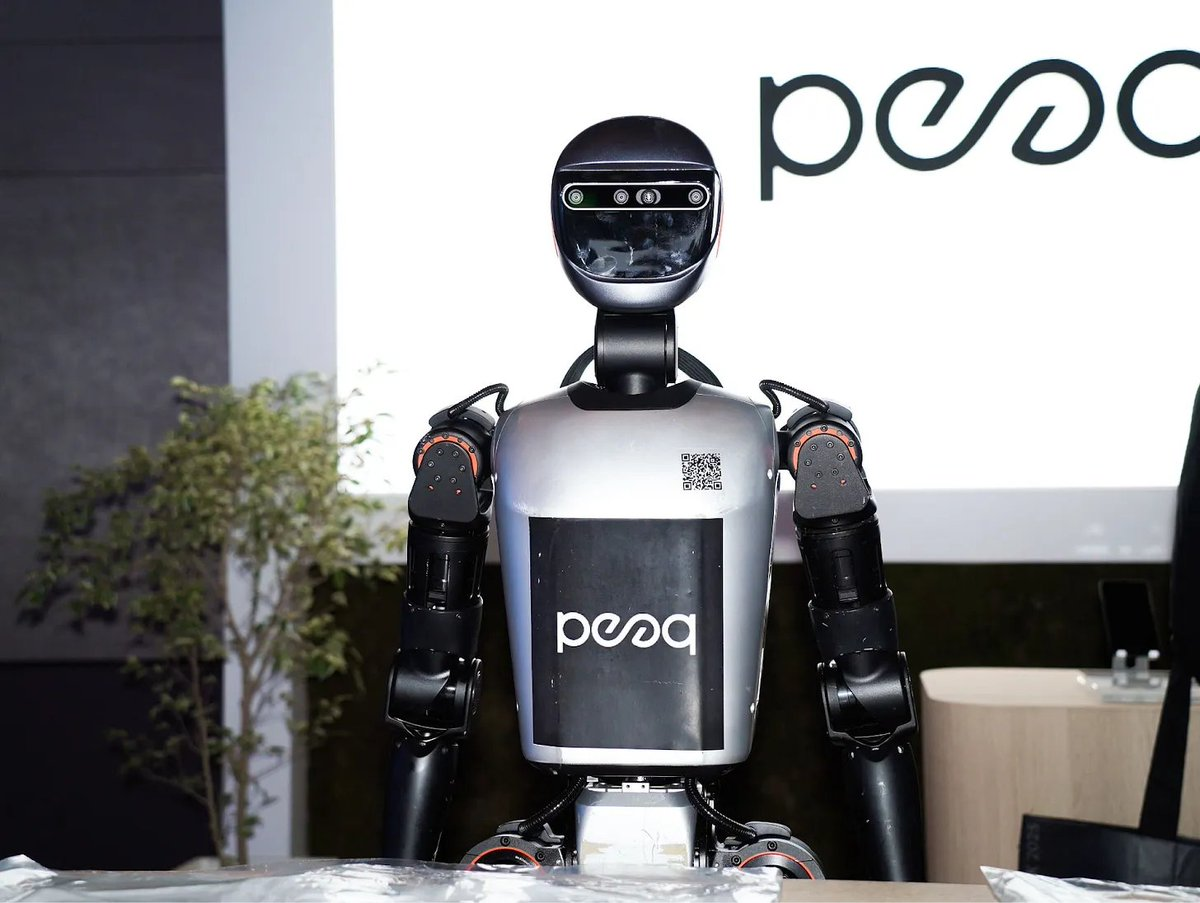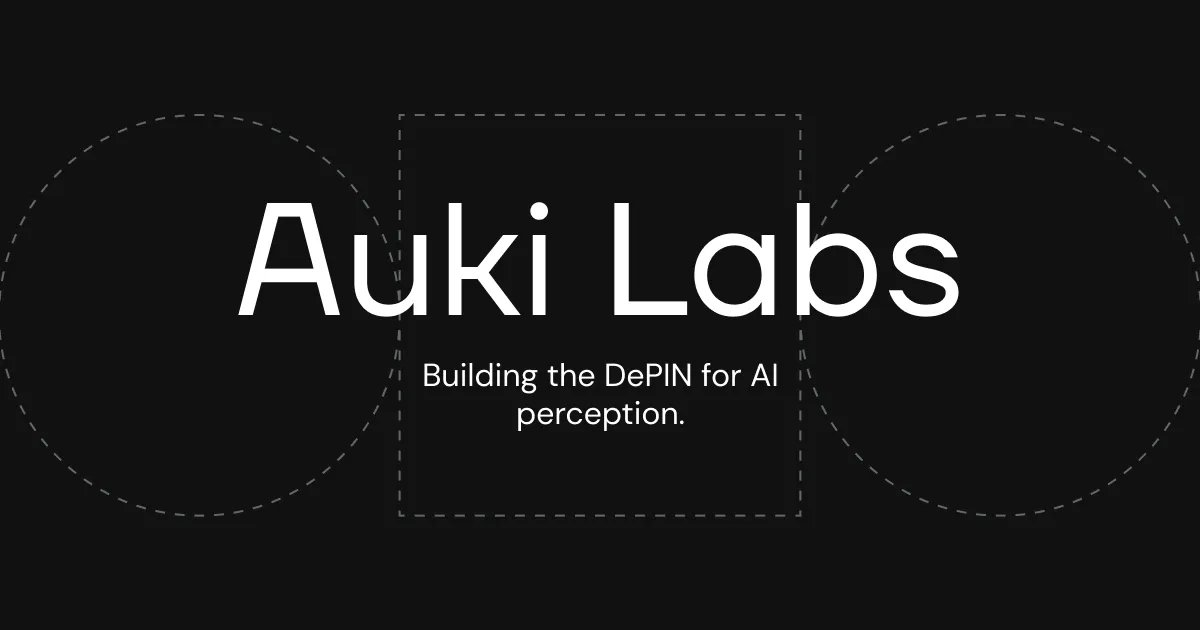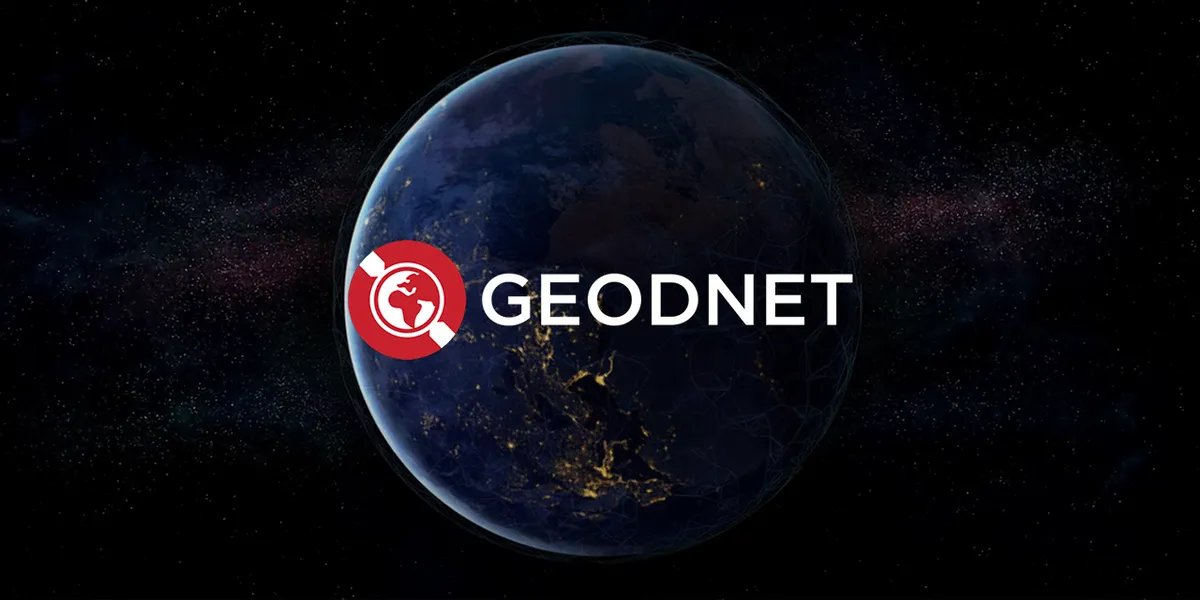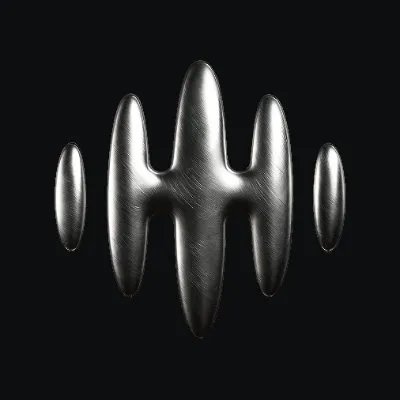An Introduction To Robotics: The Next Frontier of Crypto
Welcome to AI Dispatch #37, written by @ schizoxbt ✍️
This week, we spare you our general market update and provide you with an introduction to what we believe is gonna be one of the hottest topics of the year: robotics.
Introduction
In the early 2000s, a man named Ray Kurzweil made an interesting observation.
He saw that the rate of technological progress was accelerating, with every new invention, the returns of that invention would increase exponentially over time. For example, the discovery of fire led to metallurgy, which in turn led to the development of machines, which led to the creation of computers, which led to more advanced chip technology, which led to the advancement of AI, and so on.
The creation of new technologies has accelerated along this path, and a feedback loop has been established that allows humans to push forward into new frontiers. We gain better tools that enable faster research, which in turn allows us to produce even better tools, thereby accelerating the next cycle.
Which brings us to where we are today.
In what seems like no time at all, we’ve teleported into a future with advancing AI, autonomous cars, internet money via crypto, and now robots.
This new era, driven by robotics, is projected to lead to a boom in labour with humanoid androids able to perform various general labour tasks. Robots don’t need breaks, don’t take vacations, and are end-over-end cheaper than humans.
Companies are realising that they can get a warehouse full of robots that can perform these tasks at scale for less than the human equivalent. That’s a pretty significant unlock for them.
Where does crypto fit in all this? Cryptocurrency can be integrated across three different layers, whether its financial, coordination, or infrastructure. The next section dives deeper into the robotics tech stack, highlighting the most interesting projects in the crypto x robotics vertical.
Dissecting the Robotics Tech Stack Across the 3 Layers
This is how crypto can integrate its way across the robotics stack:
1. Financial Layer
- Crypto introduces new financial rails that enable robots to earn and pay in a trustless and programmatic manner.
- Robots can have crypto wallets that enable them to receive and send micropayments, which traditional payment rails cannot accommodate. This is particularly important in a potential future where billions of robots interact with each other autonomously, as blockchain technology can support this level of interaction.
- DAOs could also raise money to fractionally fund ownership of robots or fleets of robots through tokenisation, opening up a new investment/ownership avenue for investors.
2. Coordination Layer
- Coordination is a major key in operating robotic networks efficiently. You need ways to assign tasks, verify work, align incentives, etc.
- Smart contracts would serve as the coordination logic, where jobs, payments, and confirmations can all be executed and verified on a blockchain.
- Governance could be used for fleet upgrades, deployment areas, pricing, and more, voted on by token holders or automated rulings.
3. Infrastructure Layer
- Robots require a shared foundation to build upon, which encompasses positioning systems, maps, communication networks, identity systems, and computing capabilities. If robots are to play a significant role in society, they’ll need maps to navigate through a world designed for humans, be able to determine their location at any given time, and understand how to communicate with/identify one another. Crypto provides an open/decentralised way to do this, rather than relying on traditional infrastructure such as Google Cloud or AWS.
- Robots require a method to pinpoint their exact location, and RTK (Real-Time Kinematic) enables them to do so with centimetre-level accuracy using GPS. This kind of data is essential for autonomous movement and navigation.
- To prove its identity, each robot could have a crypto wallet where it can demonstrate its authenticity, sign telemetry or verify proof-of-work data, and build an onchain reputation.
Now that we have introduced the ways cryptocurrency interacts with robotics, let’s see how this works in practice, highlighting some crypto x robotics projects that should be on your watchlist.
peaq - @ peaq

Many of you may already be aware of peaq, but it’s hard not to mention them when they are currently the largest robotics token by market cap in crypto.
peaq is an L1 built as the backbone of the Machine Economy, treating machines, robots, and devices as first-class citizens. This means machines of any build (land, air, sea, or space) can have apps built for them.
Machines want apps built on peaq because apps turn them into autonomous economic agents, able to earn, coordinate, and upgrade themselves, while developers gain access to the entire machine economy.
These machines then become a natively onchain participant. peaq already has over 3M machines onchain, and that number is only growing over time.

In the past few months, peaq has announced:
- Their Robotics SDK, which enables builders to bring their machines onchain more easily, with self-sovereign IDs that allow robots to pay, get paid, and verify their data.
- The first-ever tokenised robo-farm that provides vegetables for a local community.
- The first robot to receive a self-sovereign ID
peaq also offers a wide range of plug-and-play modules, so teams don’t have to rebuild core rails. This is a key piece to understand as it turns peaq into a robotics infrastructure-as-a-service provider. That’s a big unlock for developers as they can skip the infrastructure setup and go straight to launching their product.
With peaq positioning themselves as the financial/coordination/identity layer for machines, there is a lot of potential for them to really establish themselves as a leader in this sector.
These layers are a necessary part of the crypto x robotics crossover, bringing a financial economy to all machines that allows them to scale with demand without having to build these systems from scratch. If robots become as large as predicted, then there will be millions of autonomous robots buying, selling, and interacting with each other on a massive scale.
$PEAQ is currently around a $125M market cap and priced at ~$0.09 at the time of writing. As more projects built using peaq’s SDK and leverage their machine economy, the more room they have to grow the crypto x robotics sector.
Auki - @ AukiNetwork

Robots need to be able to interact with and navigate a world created by humans, which involves a significant amount of spatial processing. They need to navigate around corners, over sidewalks, know when to use a crosswalk, and many other things that we normally wouldn’t think about.
Auki has created something called the posemesh, which they’ve described as a “decentralised machine perception network and collaborative spatial computing protocol, designed to allow digital devices to securely and privately exchange spatial data and computing power to form a shared understanding of the physical world.”
Ideally, this helps make the physical world a searchable, browsable, and navigable place for robots to build on their spatial awareness. Auki is creating something similar to a decentralised nervous system for machines.
With the posemesh, devices can request and contribute sensor data, computation, storage, and other various services. Since there are numerous applications, layers, and data sets that can be contributed to, Auki enables different machine profiles to both contribute to and receive value from the network.
$AUKI is currently around a $78M market cap and priced at ~$.02 at the time of writing. Auki just talked about getting exclusivity talks with one of China’s largest robotics company and potentially getting their AR navigation tech integrated into an airline. These are some good catalysts for future growth!
Geodnet - @ geodnet_

We referenced RTK earlier in this report, but let’s give a bit more colour to it: RTK stands for Real-Time Kinematic, which is a high-precision technique built on top of regular GPS/GNSS. It allows for centimetre-level location accuracy, which is necessary infrastructure for robots, drones, autonomous vehicles, and spatial intelligence networks.
This infrastructure allows these machines to navigate, map, and coordinate reliably in the physical world. Without RTK, their positioning drifts by metres, making autonomous movement, precision tasks, and verifiable on-chain data essentially impossible.
Typically, this is done using a GNSS (Global Navigation Satellite System) station and a rover.
A rover is the robot/drone that receives those GNSS signals, estimates its position, and then applies correction data from a nearby base station to refine that estimate to centimetre-level accuracy in real-time.
Geodnet is a decentralised RTK network that incentivises base-station operators with its native token. They are touted as the largest RTK corrections provider and have even gotten visible coverage in mainstream GNSS circles.
$GEOD is currently around a $42M market cap and priced at ~$0.13 at the time of writing. Just a few days ago they released pre-orders for their handheld GNSS RTK receiver, which could serve as a catalyst for them.
CodecFlow - @ codecopenflow

CodecFlow is a Solana-based project aiming to be the execution layer for robots & AI agents. Essentially, they aim to equip AI agents with a physical presence and the ability to act, not just think or speak. This would open up many possibilities, as AI agents have not had a way to perform physical tasks in the real world at scale.
To help bring this to reality, Codec use Vision-Language-Action (VLA) models.
These models let agents:
- See their environment through cameras or screen capture
- Understand what’s happening using AI models
- Take action, either through software or physical models
The Codec stack is comprised of two core pieces: Fabric and Operator Kit (OPTR).
Fabric is like a smart router for computing power, acting as a unified orchestration layer that intelligently schedules workloads across cloud providers. It will route these workloads to the cheapest available GPU/computing power.
With this, you can route fleets of robot agents to the most cost-effective cloud provider without being locked into a more expensive option.
Codec’s Operator Kit is essentially a developer kit for actually programming these agents. This is what enables builders to create agents that can perceive, decide, and act reliably. It standardises workflow and makes these agents more robust and scalable.
$CODEC is currently around a $13M marketcap and priced at ~$.018 at the time of writing. With the launch of the Operator Toolkit in August and integration with peaq’s MachineDex, Codec has been able to boost their standing in the robotics narrative.
Silencio - @ silencionetwork

Sound is one of those senses that provides you with more information about the surrounding world than you might think. Being able to hear a car honk, a police siren wail, or even your baby cry is a supremely informative sensation
It takes humans years of learning and nuance to understand sounds in our everyday lives, so imagine creating a robot that needs to understand auditory cues – it’s no small feat! For example, if you think about autonomous delivery robots, they’d need to be able to recognise emergency sirens, amongst other things.
Silencio’s is building this auditory layer, allowing anyone with a phone or sensor to become a node in their network. If you can collect enough sound data, these robots can gain the environmental awareness they need, along with the necessary audio perception.
Silencio has managed to amass over 180 countries with daily active nodes, 1300+ years of sound data, and over 1 million contributors uploading data to the network.
$SLC is currently around a $6M market cap and priced at ~$.0002 at the time of writing. With their keynote Back in September, Silencio showcased how important sound data is for the future of robots, and if they can continue to grow this moat, they’re positioned for a strong future.
The End or the Beginning?
While this may be the end of this report, it is by no means the end of the robotics era, and certainly not the end of robotics x crypto. This is still a nascent space, and the world will continue to grow into these sectors as time passes.
Currently, the robotics market cap in stocks is ~$112B and for the crypto x robotics sector, it’s roughly ~$404M. This indicates that we have ample room for growth here.
There are numerous projects we could’ve spoken about, and hundreds of ways to explain robotics and its potential. This is such a broad topic and it’s rapidly expanding every day, and as Kurzweil uncovered, it’s likely to expand exponentially the further we get into the future.
There will soon come a time when it’s normal to have a humanoid machine roaming about your house doing menial household chores, just as it has become more normal to see autonomous vehicles on the roadways.
Things are only going to get weirder.
This is by no means a complete roundup of the sector, as it’s in constant evolution. Let us know if we missed any project, or if you have some alpha on some others we should be paying attention to.
Make sure to tag them in the comments so we can check them out!
Schizo out!
Disclaimer:
- This article is reprinted from [castle_labs]. All copyrights belong to the original author [castle_labs]. If there are objections to this reprint, please contact the Gate Learn team, and they will handle it promptly.
- Liability Disclaimer: The views and opinions expressed in this article are solely those of the author and do not constitute any investment advice.
- Translations of the article into other languages are done by the Gate Learn team. Unless mentioned, copying, distributing, or plagiarizing the translated articles is prohibited.
Related Articles

The Future of Cross-Chain Bridges: Full-Chain Interoperability Becomes Inevitable, Liquidity Bridges Will Decline

Solana Need L2s And Appchains?

Sui: How are users leveraging its speed, security, & scalability?

Navigating the Zero Knowledge Landscape

What is Tronscan and How Can You Use it in 2025?
